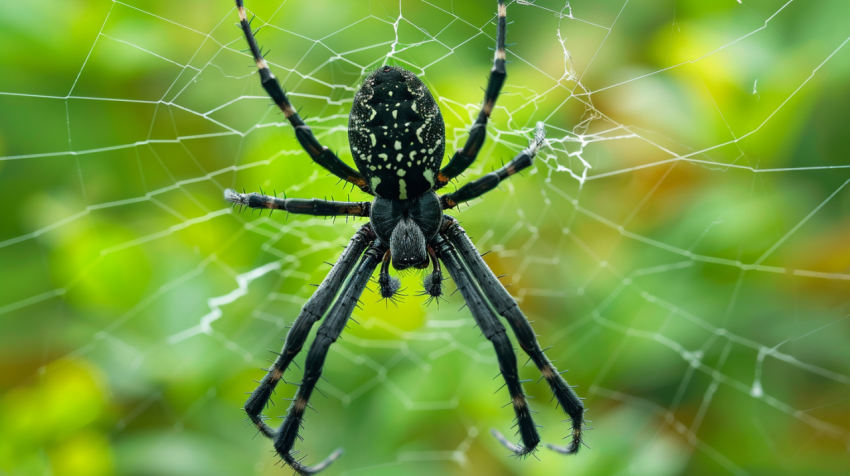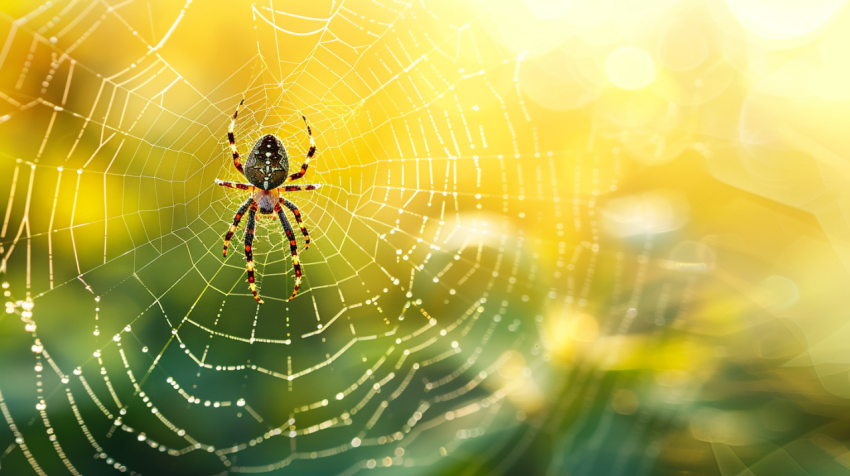






Spiders: Web-Weavers and Skilled Predators - Biology, Diversity & Ecology
Spiders are air-breathing arthropods belonging to the class Arachnida and the order Araneae. They are distinct from insects, having eight legs instead of six and two body segments instead of three (cephalothorax and abdomen). Spiders are found worldwide in nearly every terrestrial habitat, from deserts to rainforests to mountains. Renowned for their silk-spinning abilities and predatory prowess, spiders play a crucial role in controlling insect populations and maintaining ecological balance.
1. Spider Biology and Anatomy:
- Eight Legs: The defining characteristic of spiders is their eight legs, each with seven segments.
- Cephalothorax: The fused head and thorax region, containing the eyes, mouthparts, and attachment points for the legs.
- Abdomen: The posterior body segment, containing the heart, digestive tract, reproductive organs, and silk glands.
- Pedipalps: Small, leg-like appendages near the mouth, used for sensing, manipulating prey, and, in males, for transferring sperm.
- Chelicerae: Mouthparts that end in fangs, used to inject venom into prey.
- Spinnerets: Silk-spinning organs located at the tip of the abdomen.
- Eyes: Most spiders have eight simple eyes, although some have fewer. The arrangement and size of the eyes vary among families and are used in classification.
2. Spider Silk and Web-Building:
Spiders are famous for their ability to produce silk, a protein fiber with remarkable strength and elasticity. They use silk for various purposes:
- Web-Building: Many spiders construct webs to capture prey. Web designs vary greatly, from the classic orb webs to sheet webs, funnel webs, and tangle webs.
- Prey Wrapping: Spiders often wrap their captured prey in silk to immobilize it.
- Draglines: A safety line of silk that spiders trail behind them as they move.
- Ballooning: Some spiders, especially spiderlings, use silk to disperse by catching air currents and "ballooning" to new locations.
- Egg Sacs: Spiders enclose their eggs in silken sacs for protection.
- Retreats: Many spiders build silken retreats or burrows for shelter.
3. Spider Diversity:
There are over 48,000 known spider species worldwide, classified into over 120 families. Some notable groups include:
- Orb-Weavers (Araneidae): Known for their intricate, circular webs.
- Jumping Spiders (Salticidae): Active hunters with excellent vision, known for their jumping ability.
- Wolf Spiders (Lycosidae): Ground-dwelling hunters that chase down their prey.
- Tarantulas (Theraphosidae): Large, hairy spiders, some of which are popular in the pet trade.
- Brown Recluse Spiders (Sicariidae): Venomous spiders with a violin-shaped marking on their cephalothorax.
- Black Widow Spiders (Theridiidae): Venomous spiders with a distinctive red hourglass marking on the underside of their abdomen.
- Funnel-Web Spiders (Hexathelidae & Atracidae): Known for building funnel-shaped webs and some species having potent venom.
4. Spider Behavior:
- Hunting: Spiders are predators, and their hunting strategies vary widely. Some are active hunters that chase or ambush prey, while others are web-builders that rely on their webs to trap insects.
- Courtship: Male spiders often engage in elaborate courtship rituals to attract females and avoid being eaten. These rituals can involve vibrations, visual displays, and offering gifts of food.
- Maternal Care: Some spiders exhibit maternal care, guarding their egg sacs and even carrying their young on their backs.
5. Spider Diet and Feeding:
Spiders are carnivorous, primarily feeding on insects. They use their fangs to inject venom into their prey, which paralyzes or kills it. The venom also contains digestive enzymes that begin to liquefy the prey's tissues. The spider then sucks up the digested fluids, leaving behind the exoskeleton.
6. Spider Venom:
Most spiders are venomous, but very few species pose a significant threat to humans. Spider venom is primarily used to subdue prey and typically contains a mixture of neurotoxins (affecting the nervous system) and cytotoxins (affecting tissues).
7. Ecological Importance of Spiders:
Spiders play a vital role in ecosystems:
- Insect Population Control: Spiders are major predators of insects, helping to regulate insect populations and prevent outbreaks of agricultural pests.
- Food Source: Spiders are an important food source for birds, lizards, other arthropods, and some mammals.
8. Threats to Spiders:
Spider populations face several threats:
- Habitat Loss: The destruction of natural habitats due to agriculture, urbanization, and deforestation reduces spider populations.
- Pesticide Use: Insecticides can directly kill spiders or reduce their food supply.
- Climate Change: Changes in temperature and precipitation patterns can affect spider distribution and survival.
9. Spider Conservation:
Protecting spider populations involves:
- Habitat Preservation: Conserving and restoring natural habitats.
- Reducing Pesticide Use: Promoting integrated pest management (IPM) strategies that minimize the use of harmful chemicals.
- Public Education: Raising awareness about the importance of spiders and dispelling myths and fears.
10. Studying Spiders (Arachnology):
The scientific study of spiders and other arachnids is known as arachnology. Scientists who study spiders are called arachnologists. Research on spiders contributes to our understanding of ecology, evolution, behavior, and even biomaterials (spider silk).
Conclusion:
Spiders are a fascinating and diverse group of arthropods that play a crucial role in maintaining ecological balance. Their unique adaptations, intricate web-building abilities, and predatory behavior have made them a subject of scientific study and a source of both fear and fascination for humans. By understanding their importance and the threats they face, we can work to conserve these remarkable creatures and the vital ecosystem services they provide.
Spider silk, spider web, spider species, orb-weaver, jumping spider, wolf spider, tarantula, brown recluse, black widow, funnel-web spider, spider venom, spider bite, arachnid, Araneae, cephalothorax, abdomen, pedipalps, chelicerae, spinnerets, spider eyes, spiderling, ballooning, egg sac, spider behavior, hunting, courtship, maternal care, spider diet, insectivore, predator, ecological importance, insect control, habitat loss, pesticide use, climate change, spider conservation, arachnology, biomaterials, spider silk proteins, spider anatomy, spider physiology, spider evolution, spider classification, spider identification, spider toxins, antivenom.

